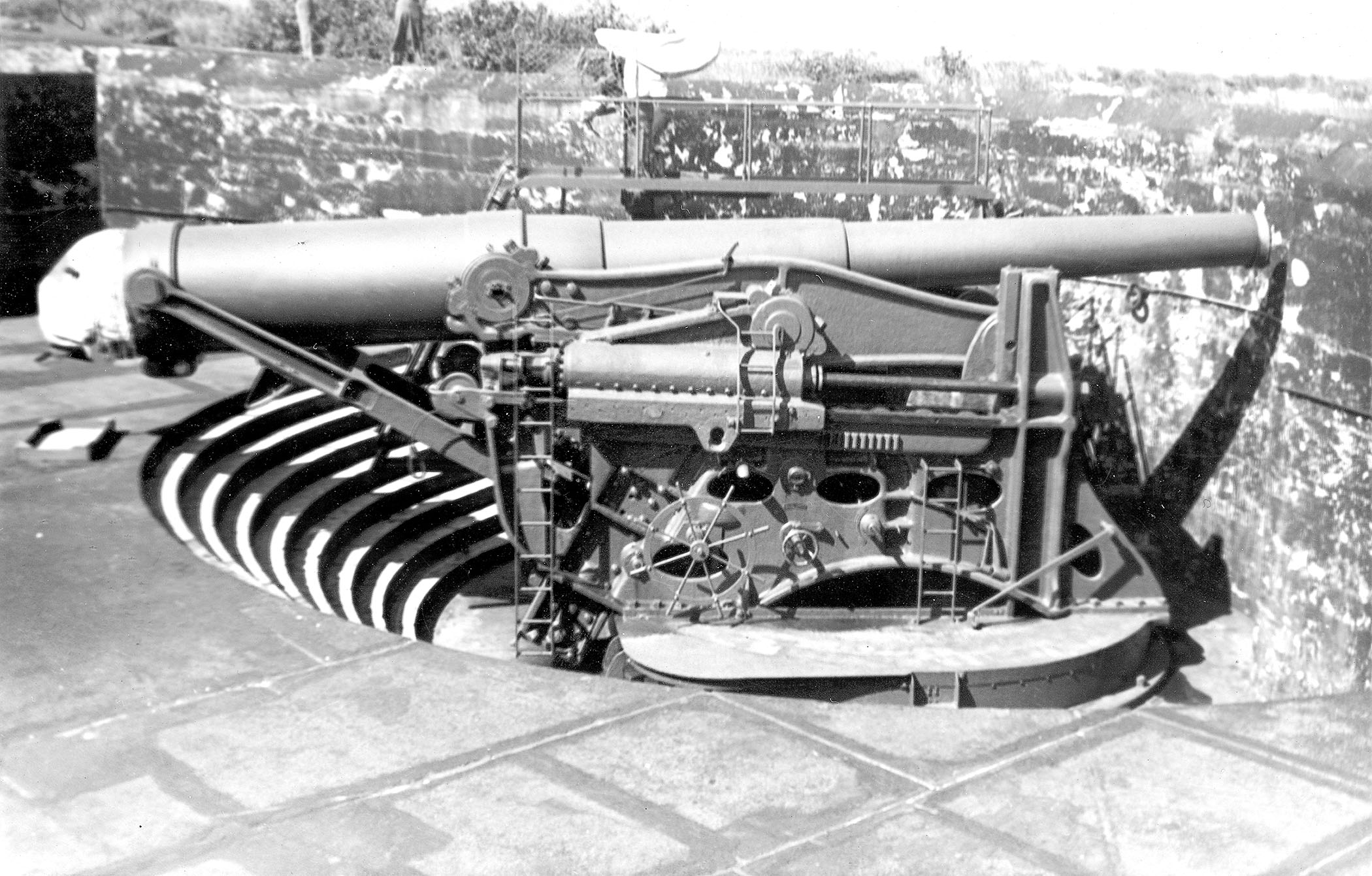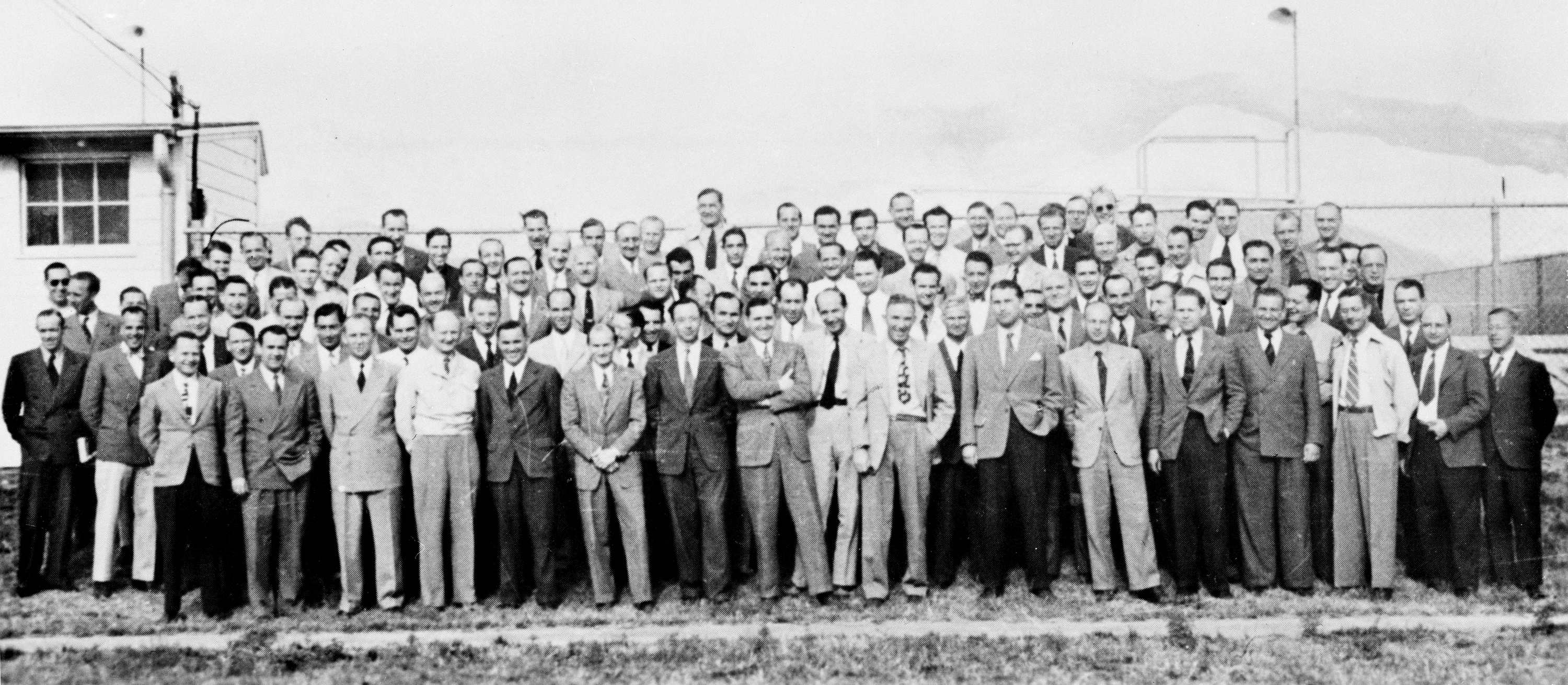|
Fort Michie
Fort Michie was a United States Army coastal defense site on Great Gull Island, New York. Along with Fort H. G. Wright, Fort Terry, and Camp Hero, it defended the eastern entrance to Long Island Sound as part of the Harbor Defenses of Long Island Sound, thus defending Connecticut's ports and the north shore of Long Island.Berhow, p. 208 The fort was named after First Lieutenant Dennis Michie, who was killed at San Juan Hill during the Spanish–American War. Michie is also known for being the first person to bring football to the United States Military Academy by organizing the first Army-Navy game, where the football stadium is also named after him. The fort was first developed at the turn of the 20th century and was active in World War I and World War II. After World War II it was deactivated as a coast defense fort. Since the 1950s the island has been used by the American Museum of Natural History to study migratory terns. History Construction and armament Fort Michie ... [...More Info...] [...Related Items...] OR: [Wikipedia] [Google] [Baidu] |
Great Gull Island
Great Gull Island is a island separating the Long Island and Block Island sounds, located approximately southwest of Little Gull Island. Both islands are located in the town of Southold in Suffolk County, New York, and lie roughly midway between Plum Island and Fishers Island. The island is the location of former military fortifications, but is now owned by the American Museum of Natural History which is working to restore its ecosystem. It hosts many nesting Common and Roseate terns. History A major stopover for birds following the Atlantic Flyway, Great Gull Island was the home of large colonies of nesting terns up until the end of the 19th century, when many birds were killed as a result of the millinery trade and the construction of military fortifications on the island. In 1897, Fort Michie was constructed on Great Gull Island as part of the Coast Defenses of Long Island Sound. The military base was operational from the Spanish–American War through World War II ... [...More Info...] [...Related Items...] OR: [Wikipedia] [Google] [Baidu] |
Harbor Defenses Of Long Island Sound
The Harbor Defenses of Long Island Sound was a United States Army Coast Artillery Corps harbor defense command. It coordinated the coast defenses of Long Island Sound and Connecticut from 1895 to 1950, beginning with the Endicott program. These included both coast artillery forts (all but two on islands in the sound) and underwater minefields. The area defended included the approach via the Sound to New York City, the port cities and manufacturing centers of New London, New Haven, and Bridgeport, and eventually included the submarine base and shipyard in Groton. The command originated circa 1900 as an Artillery District, was renamed Coast Defenses of Long Island Sound in 1913, and again renamed Harbor Defenses of Long Island Sound in 1925.Stanton, pp. 455-481Rinaldi, pp. 165-166Berhow, pp. 430-434 History Early Long Island Sound forts Colonial period Connecticut appears to have had few coastal fortifications in the colonial era. Unnamed forts are referred to in New Haven at ... [...More Info...] [...Related Items...] OR: [Wikipedia] [Google] [Baidu] |
Disappearing Gun
A disappearing gun, a gun mounted on a ''disappearing carriage'', is an obsolete type of artillery which enabled a gun to hide from direct fire and observation. The overwhelming majority of carriage designs enabled the gun to rotate backwards and down behind a parapet, or into a pit protected by a wall, after it was fired; a small number were simply barbette mounts on a retractable platform. Either way, retraction lowered the gun from view and direct fire by the enemy while it was being reloaded. It also made reloading easier, since it lowered the breech to a level just above the loading platform, and shells could be rolled right up to the open breech for loading and ramming. Other benefits over non-disappearing types were a higher rate of repetitive fire and less fatigue for the gun crew. Some disappearing carriages were complicated mechanisms, protection from aircraft observation and attack was difficult, and almost all restricted the elevation of the gun. With a few ... [...More Info...] [...Related Items...] OR: [Wikipedia] [Google] [Baidu] |
12-inch Gun M1895
The 12-inch coastal defense gun M1895 (305 mm) and its variants the M1888 and M1900 were large coastal artillery pieces installed to defend major American seaports between 1895 and 1945. For most of their history they were operated by the United States Army Coast Artillery Corps. Most were installed on Disappearing gun, disappearing carriages, with early installations on low-angle barbette mountings. From 1919, 19 long-range two-gun batteries were built using the M1895 on an M1917 long-range barbette carriage. Almost all of the weapons not in the Philippines were scrapped during and after World War II. History In 1885, William Crowninshield Endicott, William C. Endicott, President of the United States, President Grover Cleveland's secretary of war, was tasked with creating the Board of Fortifications to review seacoast defenses. The findings of the board illustrated a grim picture of existing defenses, and in its 1886 report recommended a massive $127 million construction progr ... [...More Info...] [...Related Items...] OR: [Wikipedia] [Google] [Baidu] |
Innis N
Innis may refer to: Places * Innis, Louisiana, U.S. * Innis College, University of Toronto, Canada People Surname * Harold Innis (1894–1952), Canadian political economy professor who wrote on communication * Hubert Van Innis (1866–1961), Belgian Olympic archer * Jeff Innis (1962-2022), American pitcher in Major League Baseball * Niger Innis, American activist and politician, National Spokesperson for the Congress of Racial Equality * Roy Innis (1934–2017), American activist and politician, National Chairman of the Congress of Racial Equality * William T. Innis (1826–1901), American politician and farmer Given name * Innis Green, Jacksonian Democrat member of the U.S. House of Representatives from Pennsylvania * Innis N. Palmer (1824–1900), American Civil War major general * Innis Palmer Swift (1882–1953), World War II major general and Innis N. Palmer's grandson See also * * INIS (other) * Innes (other) * Ennis (other) * Ennes (d ... [...More Info...] [...Related Items...] OR: [Wikipedia] [Google] [Baidu] |
United States Army Coast Artillery Corps
The U.S. Army Coast Artillery Corps (CAC) was an administrative corps responsible for coastal, harbor, and anti-aircraft defense of the United States and its possessions between 1901 and 1950. The CAC also operated heavy and railway artillery during World War I. History As early as 1882 the need for heavy fixed artillery for seacoast defense was noted in Chester A. Arthur's Second Annual Message to Congress where he noted: In 1885 the Endicott Board was convened under the subsequent Grover Cleveland administration, chaired by Secretary of War William Crowninshield Endicott. This board recommended a large-scale program of harbor defenses at 29 ports, including guns, mortars, and mine fields. Most of their recommendations were implemented and new defenses were constructed by the United States Army Corps of Engineers 1895–1905. As the defenses were constructed, each harbor or river's installations were controlled by Artillery Districts, renamed Coast Defense Commands in 191 ... [...More Info...] [...Related Items...] OR: [Wikipedia] [Google] [Baidu] |
United States Army Ordnance Corps
The United States Army Ordnance Corps, formerly the United States Army Ordnance Department, is a sustainment branch of the United States Army, headquartered at Fort Lee, Virginia. The broad mission of the Ordnance Corps is to supply Army combat units with weapons and ammunition, including at times their procurement and maintenance. Along with the Quartermaster Corps and Transportation Corps, it forms a critical component of the U.S. Army logistics system. The U.S. Army Ordnance Corps mission is to support the development, production, acquisition, and sustainment of weapon systems, ammunition, missiles, electronics, and ground mobility materiel during peace and war to provide combat power to the U.S. Army. The officer in charge of the branch for doctrine, training, and professional development purposes is the Chief of Ordnance. The current Chief of Ordnance is Brigadier General Michael B. Lalor. History Colonial period to War of Independence During the colonial era in Americ ... [...More Info...] [...Related Items...] OR: [Wikipedia] [Google] [Baidu] |
United States Army Corps Of Engineers
, colors = , anniversaries = 16 June (Organization Day) , battles = , battles_label = Wars , website = , commander1 = LTG Scott A. Spellmon , commander1_label = Chief of Engineers and Commanding General of the U.S. Army Corps of Engineers , commander2 = MGbr>Richard J. Heitkamp, commander2_label = Deputy Chief of Engineers and Deputy Commanding General , commander3 = MGKimberly M. Colloton, commander3_label = Deputy Commanding General for Military and International Operations , commander4 = MGbr>William H. Graham, commander4_label = Deputy Commanding General for Civil and Emergency Operations , commander5 = COLbr>James J. Handura, commander5_label = Chief of Staff for the U.S. Army Corps of Engi ... [...More Info...] [...Related Items...] OR: [Wikipedia] [Google] [Baidu] |
Board Of Fortifications
Several boards have been appointed by US presidents or Congress to evaluate the US defensive fortifications, primarily coastal defenses near strategically important harbors on the US shores, its territories, and its protectorates. Endicott Board In 1885 US President Grover Cleveland appointed a joint Army, Navy and civilian board, headed by Secretary of War William Crowninshield Endicott, known as the Board of Fortifications (now usually referred to simply as the Endicott Board). The findings of the Board in its 1886 report illustrated a grim picture of neglect of America's coast defenses and recommended a massive $127 million construction program for a series of new forts with breech-loading cannons, mortars, floating batteries, and submarine mines for some 29 locations on the US coast. Coast Artillery fortifications built between 1885 and 1905 are often referred to as Endicott Period fortifications. Prior efforts at harbor defense construction had ceased in the 1870s. Si ... [...More Info...] [...Related Items...] OR: [Wikipedia] [Google] [Baidu] |
Tern
Terns are seabirds in the family Laridae that have a worldwide distribution and are normally found near the sea, rivers, or wetlands. Terns are treated as a subgroup of the family Laridae which includes gulls and skimmers and consists of eleven genera. They are slender, lightly built birds with long, forked tails, narrow wings, long bills, and relatively short legs. Most species are pale grey above and white below, with a contrasting black cap to the head, but the marsh terns, the Inca tern, and some noddies have dark plumage for at least part of the year. The sexes are identical in appearance, but young birds are readily distinguishable from adults. Terns have a non-breeding plumage, which usually involves a white forehead and much-reduced black cap. Terns are long-lived birds and are relatively free from natural predators and parasites; most species are declining in numbers due directly or indirectly to human activities, including habitat loss, pollution, disturbance, an ... [...More Info...] [...Related Items...] OR: [Wikipedia] [Google] [Baidu] |
Michie Stadium
Michie Stadium is an outdoor football stadium on the campus of the U.S. Military Academy in West Point, New York. The home field for the Army Black Knights, it opened in 1924 and has a current seating capacity of 38,000. The stadium sits at the upper portion of campus, directly west of Lusk Reservoir. The field is at an elevation of above sea level and runs in the traditional north–south configuration, with the press box above the west sideline. Due to the view offered by its location overlooking the Hudson River and the Neo-Gothic architecture of the campus below, it was rated as ''Sports Illustrated''s #3 sports venue of the 20th century. Overview Dennis Michie Michie Stadium is dedicated to the memory of Dennis Michie (1870–1898), who was instrumental in starting the football program while a cadet at the Academy. A member of the Class of 1892, Michie organized, managed, and coached the first football team at West Point in 1890. Six years after graduation, he was ... [...More Info...] [...Related Items...] OR: [Wikipedia] [Google] [Baidu] |
.jpg)

_Gun_on_Moncrieff_disappearing_mount%2C_at_Scaur_Hill_Fort%2C_Bermuda.jpg)




